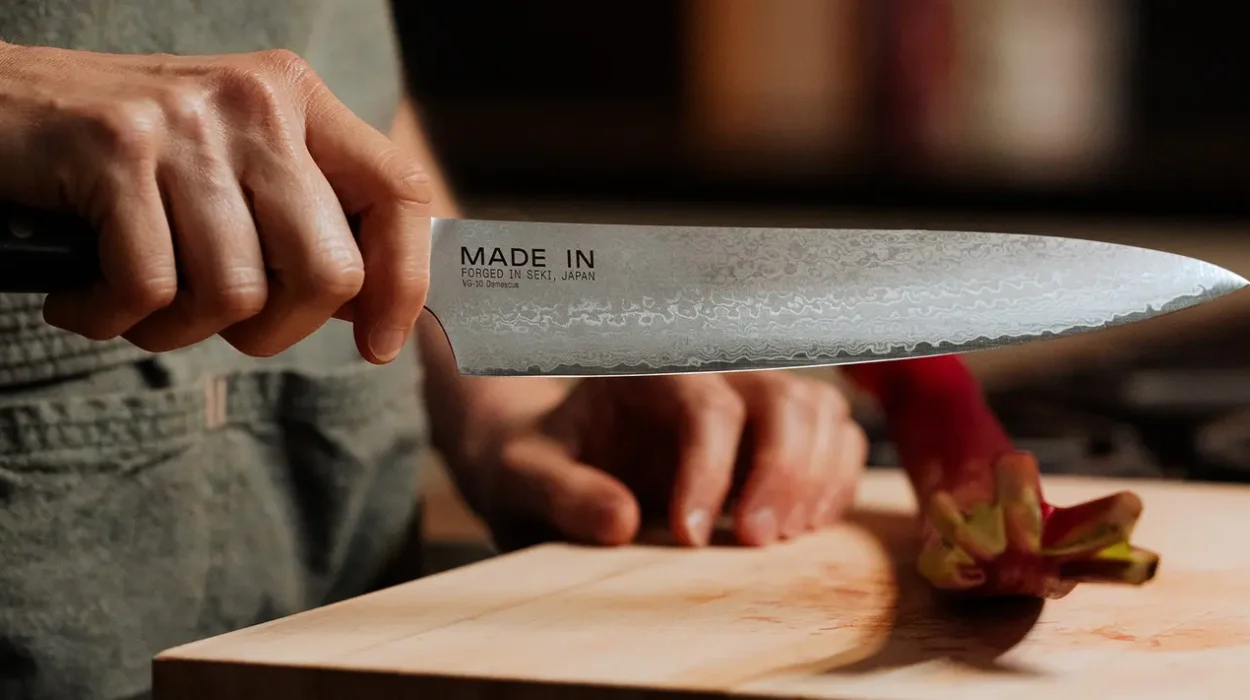When it comes to choosing the perfect kitchen knife, the debate between German knife steel vs Japanese steel is a common topic among culinary enthusiasts. Both German and Japanese knives have their unique qualities, and understanding these can help you make an informed decision. In this article, we will delve into the characteristics, benefits, and applications of both German and Japanese knives to help you understand which might be the better choice for your kitchen.

The Origin and History of German and Japanese Knives
German Knives: A Legacy of Precision
German knives are renowned for their durability and precision. The history of German knife-making dates back to the 18th century, with Solingen being a notable hub for crafting high-quality blades. Known as the City of Blades, Solingen has been at the forefront of knife manufacturing, producing brands that are synonymous with quality and reliability. Zwilling History is a testament to this rich tradition.
Japanese Knives: A Tradition of Craftsmanship
Japanese knives, on the other hand, have a history that is intertwined with the art of sword-making. The techniques used in crafting samurai swords have been adapted to create kitchen knives that are both sharp and elegant. Japanese knives are celebrated for their precision and ability to deliver thin, precise cuts, which is why they are favored by many professional chefs.
Material and Composition
German Knife Steel
German knives are typically made from stainless steel with a higher carbon content. This composition makes them resistant to rust and corrosion. The blades are often thicker and heavier, which contributes to their durability and strength. The blade thickness of German knives is designed to withstand tough cutting tasks, making them ideal for a variety of kitchen applications. Blade Thickness is a key factor in their performance.
Japanese Knife Steel
Japanese knives usually feature a harder steel with a finer grain structure. This allows for a sharper edge and more precise cutting. However, the hardness of the steel also means that Japanese knives can be more brittle and require careful handling to avoid chipping. The meticulous craftsmanship involved in producing Japanese knives results in a blade that excels in tasks requiring precision.
Design and Aesthetics
German Knives: Robust and Functional
The design of German knives focuses on robustness and functionality. They often feature a full tang, which means the blade extends through the handle, providing added balance and strength. The handles are ergonomically designed to ensure a comfortable grip, even during prolonged use.
Japanese Knives: Sleek and Elegant
Japanese knives are known for their sleek and elegant design. They often have a lighter build compared to German knives, which makes them easier to handle for precision tasks. The handles are typically octagonal or D-shaped, offering a unique and comfortable grip. The aesthetic appeal of Japanese knives is enhanced by the use of traditional techniques and materials.
Performance and Application
German Knives: Versatile and Durable
German knives are highly versatile and can handle a wide range of kitchen tasks. Their durability makes them suitable for cutting through tougher ingredients like bones and root vegetables. The weight and sturdiness of German knives provide a sense of control and power in the kitchen, making them a popular choice for home cooks and professionals alike.
Japanese Knives: Precision and Finesse
Japanese knives excel in tasks that require precision and finesse. Their sharp edges and lightweight design make them ideal for slicing fish, vegetables, and other delicate ingredients. Professional chefs often prefer Japanese knives for their ability to deliver clean and accurate cuts.
Maintenance and Care
Maintaining German Knives
German knives are generally easier to maintain due to their resistance to rust and corrosion. Regular honing can help maintain their sharpness, and they can be sharpened easily with a whetstone. For more tips on maintaining your German knives, you can refer to this German Knife Care Tips guide.
Caring for Japanese Knives
Japanese knives require more careful handling and maintenance. Due to their harder steel, they need to be sharpened with a finer grit whetstone. It is important to keep them dry and clean to prevent rusting. For detailed instructions, you may visit How to Clean Your Knives.
Price and Value
Cost of German Knives
German knives are generally more affordable and offer great value for their durability and versatility. They are a worthwhile investment for any kitchen and are often available in sets that provide a wide range of options for different culinary tasks.
Investment in Japanese Knives
Japanese knives tend to be more expensive due to the intricate craftsmanship and high-quality materials used in their production. They are considered an investment for those who value precision and finesse in their culinary work.
Conclusion: Which Knife is Right for You?
Choosing between German knife steel vs Japanese ultimately depends on your personal preferences and cooking style. If you value versatility and durability, German knives may be the better choice for you. They are well-suited for a wide range of tasks and are easy to maintain. On the other hand, if you prioritize precision and are willing to invest in maintenance, Japanese knives offer an unparalleled cutting experience.

FAQs
Are German knives better than Japanese knives?
It depends on your needs. German knives are durable and versatile, while Japanese knives offer precision and sharpness. Your choice should be based on your cooking style and preferences.
How do I maintain my German knives?
Regular honing and proper cleaning are essential. For more detailed guidance, check out this Honing Guide.
What are the best Japanese knives for professionals?
Japanese knives like the Gyuto and Santoku are popular among professionals for their precision and sharpness. They are ideal for tasks requiring detailed and delicate cuts.
This article contains affiliate links. We may earn a commission at no extra cost to you.


